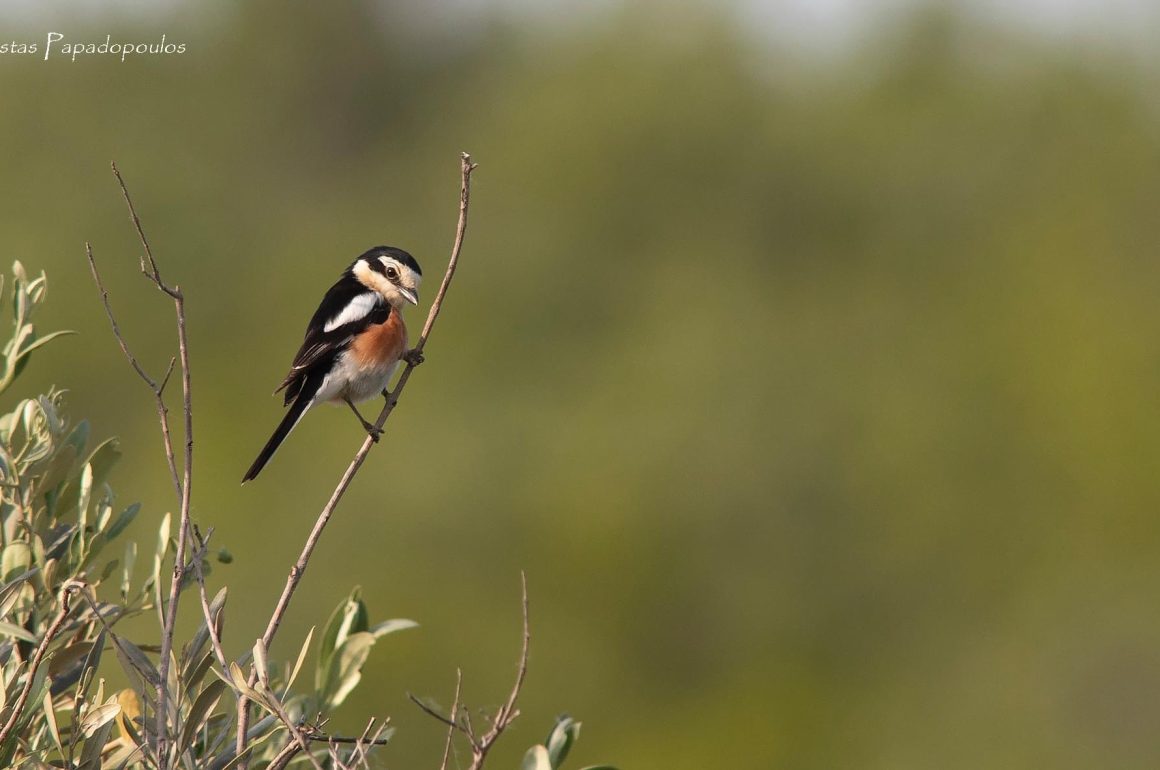
Lake Kerkini National Park in the north of Greece is the very best birding area in the Balkan Peninsula and definitely among the top ten hotspots of Europe. Surprisingly, despite being on the site of a former marsh, Kerkini is an artificial reservoir with the purpose of irrigation of arable fields. About 110 km / 70 mi northeast of Thessaloniki, the lake lies at a mere 35 m / 115 ft a.s.l. and is towered by the forested, 2,030 m / 6,660 ft high Mt. Kerkini/Belles on its northern side, offering a huge altitudinal range and a great variety of habitats. Some 320 species have been recorded here, and in springtime it is possible to observe more than 150 bird species in a week.
This is also my favourite birding spot, which I usually visit annually, but due to the pandemic disruption I was now returning after a four years break. We arrived just before midnight to meet our friend and the Limneo Hotel proprietor Nikos Gallios, with whom we shared an excellent pizza topped with fresh village produce, mere 100 m / 330 ft from his hotel. What amazed me is that, instead of the usual 6 or 8 slices, this pizza was cut into tiny, bite-size slices!
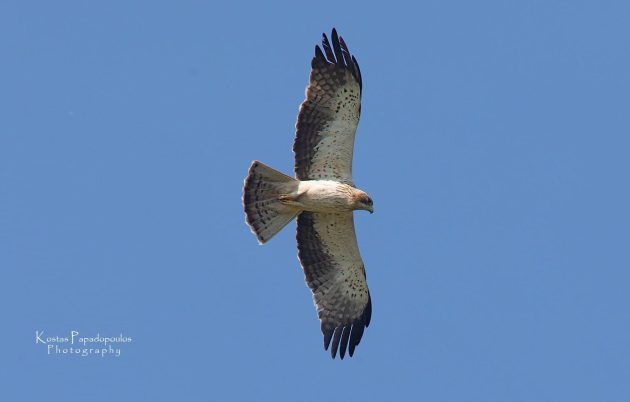 Booted Eagle by Kostas Papadopoulos
Booted Eagle by Kostas Papadopoulos
The next morning was a lazy one, a late breakfast and even later excursion. It was getting hot, so instead of an initially planned 6 km intense birding route, I opted for a leisurely 70 km round the lake drive with some en route birding intermingled with a few cafe and restaurant stops. The southern half of the lake produced White Stork, Spanish Sparrow, Pygmy Cormorant, Great White Pelican, Squacco Heron, Black-crowned Night-Heron, Eurasian Spoonbill, Black Kite, European Bee-eater, Crested Lark, Great Reed Warbler, Red-rumped Swallow, and just before the coffee break, a Lesser Spotted Eagle swallowing a snake in mid-air.
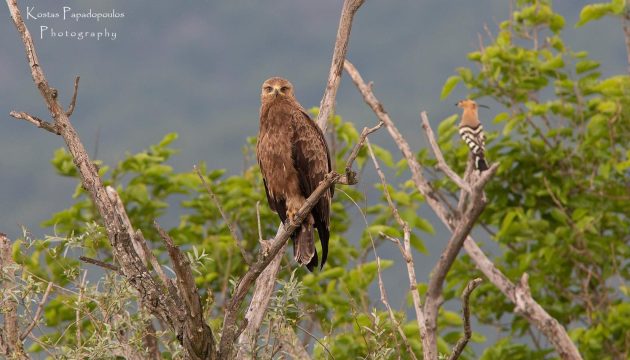 Lesser Spotted Eagle and Eurasian Hoopoe by Kostas Papadopoulos
Lesser Spotted Eagle and Eurasian Hoopoe by Kostas Papadopoulos
And then we had whipped and iced coffee frappe, which is today even more common in Greece than traditional Greek coffee (with less political correctness it may be also called Turkish coffee, something I never tried myself) in a deep shade of very dense tree crowns, which is, alas, also very much liked by a local gang of mosquitoes. Yet, that was the only time we used insect repellent on the entire trip. The northern half of the lake added Corn Bunting, European Turtle Dove, Dalmatian Pelican, Purple Heron, Eurasian Hobby, Eurasian Golden Oriole, Eurasian Green Woodpecker, and only the first of the several Masked Shrikes of the tour (cover photo by Kostas Papadopoulos).
The next stop was for lunch in a Railway Station Tavern in the Vyronenia Village. Although the trains at the Thessaloniki-Alexandroupolis line seem to be few and far in between, they still stop at this village station turned into a restaurant. We sat outdoors, shaded by old plane trees and cooled by a short shower falling in the bright sunlight. We were joined by Nikos and his family, so we ordered a dozen traditional dishes and salads to share, some local buffalo sausages and pork kebabs with yoghurt sauce, bouyiourdi (a Greek appetizer consisting of feta cheese, kasseri, tomatoes, oregano, olive oil and bell peppers), a mushroom pie, and then there was another salty pie with honey, it is all mixed up in my mind by now. The service was fast, the dishes great, prices moderate and the company priceless. To round up the day, in our base-village of Chrisochorafa, we later had one adorable Little Owl just a few hundred metres from our hotel.
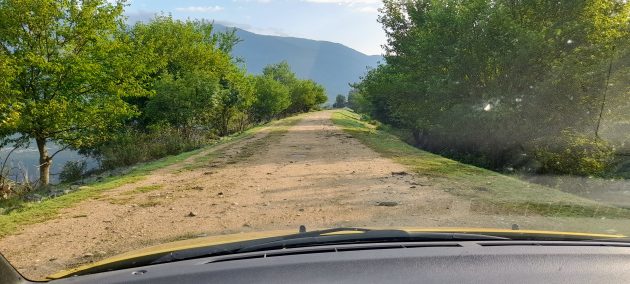
The next day was the one when I woke up early – the only time on this trip. I went to explore the best birding area of the national park, the legendary eastern levee, and this day started with another Little Owl in the next village. The levee was bursting with singing Common Nightingales, Eurasian Penduline Tits, Eastern Olivaceous Warblers, Cetti’s Warblers (one allowing for the best of views), and Cirl Buntings. Then there were a few Hawfinches and two young Black Storks, Little Bittern, Great White Egret, Glossy Ibis, Common Kingfisher, Syrian Woodpecker, Peregrine Falcon, Red-backed Shrike, Lesser Grey Shrike, Collared Flycatcher and a family of Western Yellow Wagtails. Later in the day, roadside birds included a Booted Eagle and a Levant Sparrowhawk.
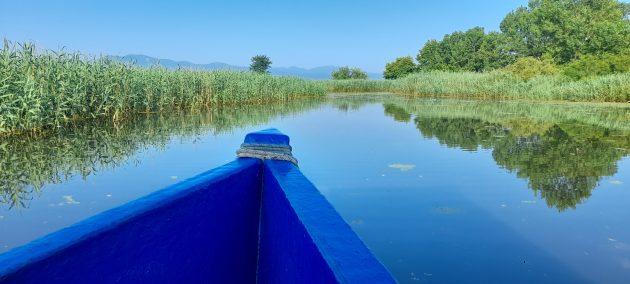
Next morning we joined one of Nikos’s Varkada Boat Tours of the lake, sailing around and through bird colonies and into the main in-flow channel of the Strymonas River where it enters the lake. Due to heavy rains many clutches of Great Crested Grebes had failed, but we observed both nests with eggs (and left the area immediately) and adults with chicks, some of them piggy-backing their mothers. We also observed nests of Pygmy Cormorants, Dalmatian Pelicans, Little Egrets, Cattle Egret (with a chick), Squacco Heron, and Spoonbills. The last time I was here, the National Park Director, Dr Theodoros Naziridis, told me they were waiting for a really high water level to pull the floating concrete raft (intended for breeding of pelicans) further away so the pile of rocks it was anchored to could become a foundation for the new wooden platform. However, during a storm the chains that kept it anchored broke off and the raft is now stranded on the shore, accessible to stray dogs and not used for breeding. The Strymonas Channel was adorned by numerous Great White Pelicans, Black-crowned Night-Herons, Glossy Ibises, also Penduline Tits, Common Reed Warblers, Cetti’s Warblers and Eurasian Tree Sparrows. Last but not least, there were three species of shrikes, Red-backed, Lesser Grey and at least 2 Masked Shrikes, possibly 2 more, an entire family (not all were showing so well).
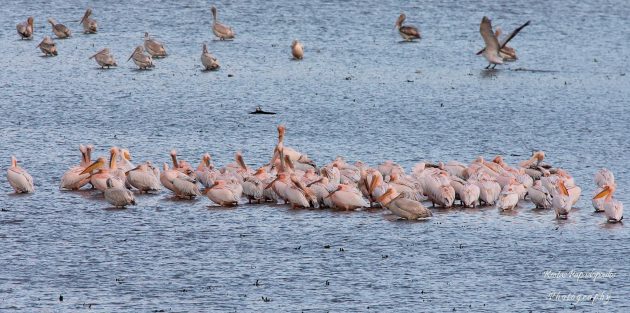 Great White Pelicans by Kostas Papadopoulos
Great White Pelicans by Kostas Papadopoulos
We devoted the afternoon to the small, abandoned and revitalised quarry behind the hamlet of Chimarros. It turned out to be the home of the final of the four local shrikes, the Woodchat Shrike (a family, 2 adults and 2 juveniles) showing well, a singing Ortolan Bunting, Turtle Dove, one more Masked Shrike, Eastern Olivaceous Warbler, Spotted Flycatcher, Yellowhammer, as well as 3 grazing Greek tortoise (Testudo graeca).
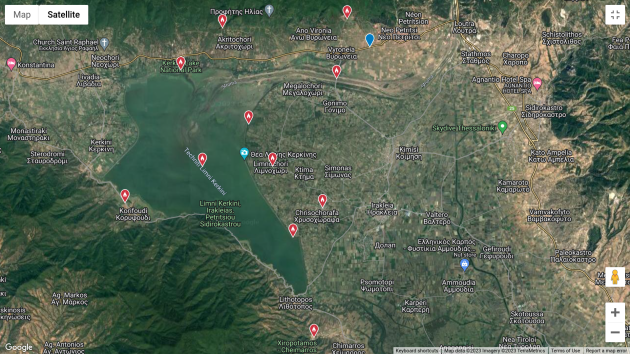
As opposed to one previous Kerkini tour when two intense days got me over 100 species, these three lazy days got me 95 species and I am very happy with the score and the way I got there. The next day we went to another national park, this time a series of coastal lagoons, but you will read that story in a fortnight.
The next stage: Birding Porto Lagos Lagoons











Dragan paints a nice portrait of Kerkini. I’ve been visiting this wonderful area regularly for the last 15 years, and have found it productive in every month I have visited (September, October, November, December, April, May and June). The most remarkable thing is how few other birdwatchers you meet there considering what a terrific destination it is. It is also rich in other wildlife, especially butterflies and reptiles. Mammals are more difficult, though it is a good area for wild cats and golden jackals. It is also scenically attractive and relatively unspoilt with plenty of excellent and good-value accommodation.